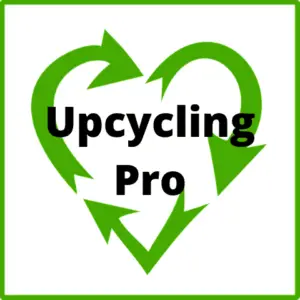Introduction
Recycling is a process of converting used materials into new products. It is an important aspect of waste reduction and has become an essential component of modern waste management practices.
In this article, we will discuss why recycling is important, the benefits of recycling, recycling programs and processes, challenges and solutions, the future of recycling, and barriers to recycling. By the end of this article, you will have a better understanding of why recycling is a vital practice that benefits the environment, economy, and society.
What is Recycling?
Recycling is the process of converting used materials into new products, reducing the need for new raw materials. It involves collecting, sorting, processing, and transforming materials into new products. Recycling can be done with a variety of materials, including paper, plastics, metals, and glass.
Why is Recycling Important?
Recycling is important for several reasons. It conserves natural resources, reduces greenhouse gas emissions, and protects wildlife and their habitats. Recycling also creates jobs, saves money, and generates revenue. It builds communities, promotes sustainability, and improves public health.
History of Recycling
Recycling has a long history dating back to ancient times when people reused materials such as bronze and iron for new products. In the modern era, recycling gained momentum during World War II, when governments encouraged citizens to recycle materials to support the war effort.
After the war, recycling declined as a result of low commodity prices and the availability of cheap raw materials. However, in the 1960s and 1970s, recycling regained popularity as a result of growing concern for the environment and the need to conserve resources.
The Benefits of Recycling
Recycling provides several environmental, economic, and social benefits.
Environmental Benefits
Recycling reduces pollution, toxic gases, and hazardous waste, and provides an alternative solution to dealing with waste by converting waste materials into new materials or fresh raw materials. Recycling also conserves natural resources and reduces the need for new landfills.
Conserving Natural Resources
Recycling reduces the demand for new raw materials, which conserves natural resources and reduces the impact of resource extraction on the environment. For example, recycling paper reduces the number of trees cut down, which preserves forest ecosystems and reduces carbon emissions.
Protecting Wildlife and Their Habitats
Recycling reduces the amount of waste that ends up in landfills, which can harm wildlife and their habitats. Landfills release toxic gases and chemicals that can pollute the air, soil, and water.
Economic Benefits
Recycling creates jobs, saves money, and generates revenue.
Creating Jobs
Recycling creates jobs in several areas, including collection, sorting, processing, and manufacturing. According to the EPA, recycling and reuse activities in the US accounted for 681,000 jobs in 2016.
Saving Money
Recycling saves money by reducing the need for new raw materials and reducing the cost of waste disposal. For example, recycling aluminum cans saves energy and reduces production costs by up to 95% compared to manufacturing new cans from raw materials.
Generating Revenue
Recycling can generate revenue through the sale of recycled materials. For example, recycled materials such as paper, plastic, and metal can be sold to manufacturers for use in new products.
Social Benefits
Recycling builds communities, promotes sustainability, and improves public health.
Building Communities
Recycling brings people together and builds community by encouraging people to work together towards a common goal. Recycling programs also provide opportunities for community involvement and education.
Promoting Sustainability
Recycling promotes sustainability by reducing waste, conserving natural resources, and reducing greenhouse gas emissions. By recycling, individuals and communities can contribute to a more sustainable future.
Improving Public Health
Recycling can improve public health by reducing the amount of waste that ends up in landfills, which can harm air and water quality. Recycling also reduces the amount of waste that is burned, which can release harmful pollutants into the air.
Recycling Programs and Processes
Recycling programs and processes vary depending on location and materials.
Recycling Programs
Recycling programs can be divided into three main categories: curbside recycling, drop-off recycling, and commercial recycling.
Curbside Recycling
Curbside recycling is a program where recyclable materials are collected from households and businesses by a designated recycling truck. The materials are then taken to a recycling facility for sorting and processing.
Drop-off Recycling
Drop-off recycling is a program where individuals bring their recyclable materials to a designated drop-off location, such as a recycling center or collection event. Drop-off recycling is typically used in areas where curbside recycling is not available.
Commercial Recycling
Commercial recycling is a program where businesses and institutions recycle their waste materials. Commercial recycling is typically managed by private waste haulers or recycling companies.
Recycling Processes
Recycling processes can vary depending on the material being recycled.
Collection
The first step in the recycling process is collection. Recyclable materials are generated by a consumer or business and then collected by a private hauler or government entity [1]. The collection process varies depending on location and materials, but it typically involves placing recyclables in a designated container for collection.
Transportation
After collection, the materials are transported to a processing facility such as a materials recovery facility or paper processor. At the processing facility, the recyclables are sorted, cleaned of contaminants, and prepared for transport to manufacturers.
Sorting
Recycling processes can vary depending on the material being recycled. For example, paper and cardboard are typically recycled by pulping and de-inking, while plastic bottles are shredded and melted down to create new products [2].
One of the challenges in the recycling process is contamination. Contamination occurs when non-recyclable materials are mixed in with recyclables, making them unusable for recycling. To prevent contamination, it is important to follow local recycling guidelines and to properly clean and sort recyclable materials.
Overall, the recycling process is an essential component of waste management that conserves natural resources, reduces pollution, and promotes sustainability. By properly recycling materials, individuals and communities can contribute to a more sustainable future.
FAQs
- What is the most commonly recycled material? The most commonly recycled material is paper. According to the EPA, paper and paperboard accounted for 25% of all recycled materials in the US in 2018 [2].
- Is recycling better than throwing things away? Yes, recycling is better than throwing things away. Recycling conserves natural resources, reduces pollution and greenhouse gas emissions, and creates jobs. Throwing things away contributes to landfills, which can harm the environment and wildlife [1].
- How does recycling help the environment? Recycling helps the environment by conserving natural resources, reducing pollution, and protecting wildlife and their habitats. Recycling also reduces greenhouse gas emissions and the amount of waste that ends up in landfills [2].
- What happens to recycled materials? Recycled materials are taken to a processing facility, where they are sorted, cleaned, and prepared for transport to manufacturers. The manufacturers then use the recycled materials to create new products [1].
- How can I encourage others to recycle? You can encourage others to recycle by setting a good example and properly recycling materials yourself. You can also educate others on the benefits of recycling and the proper methods for recycling in your community. Additionally, you can support local recycling programs and initiatives [3].


